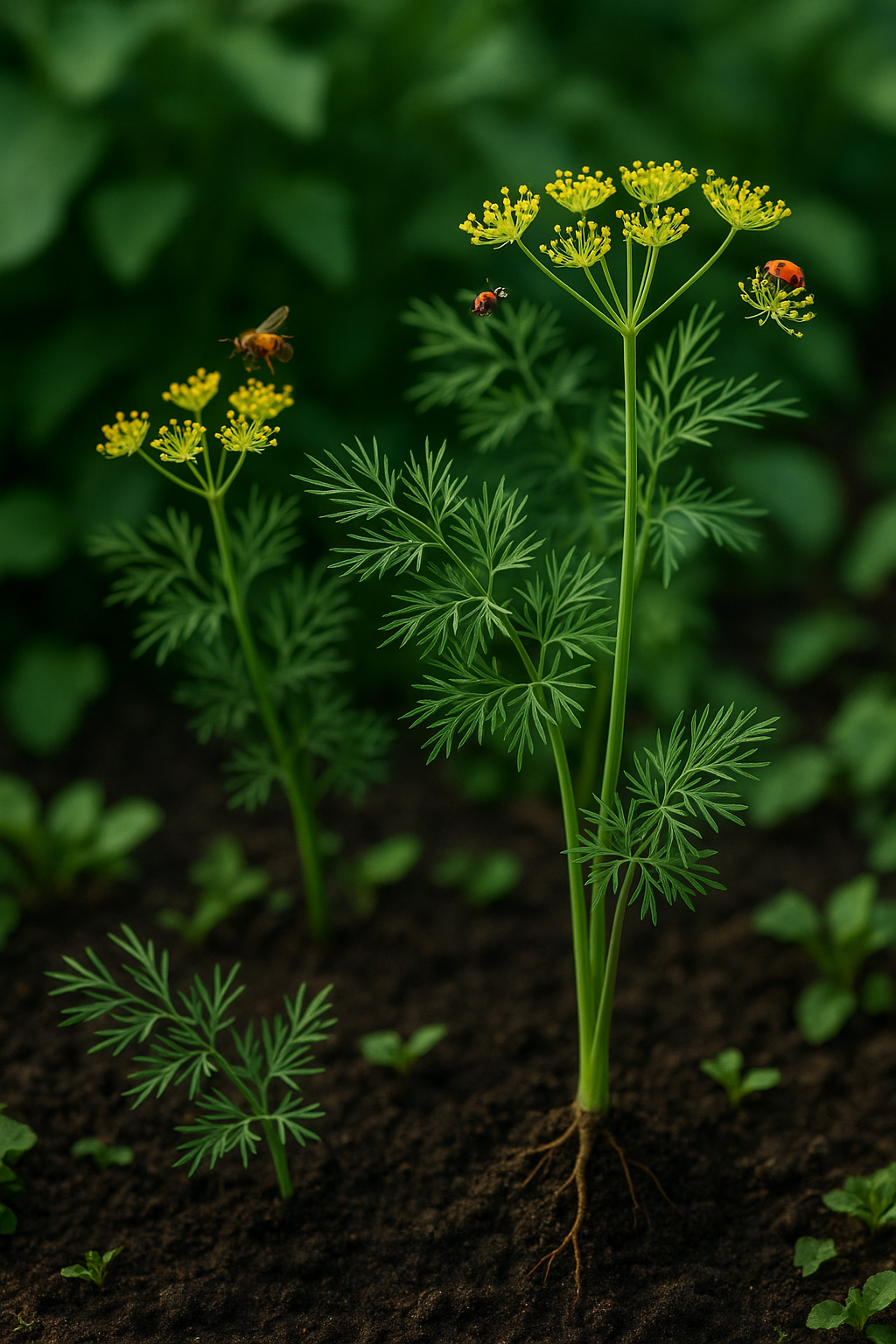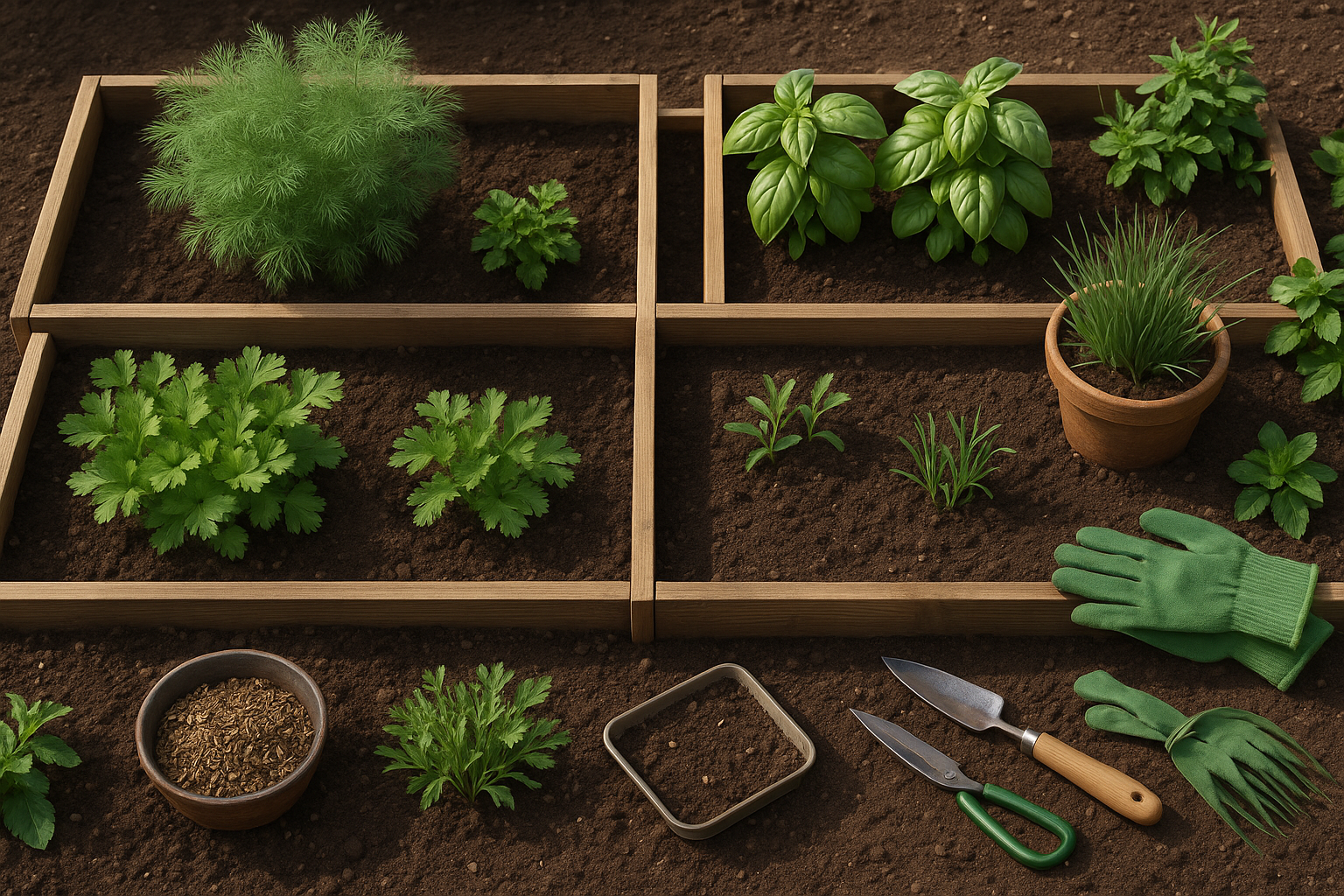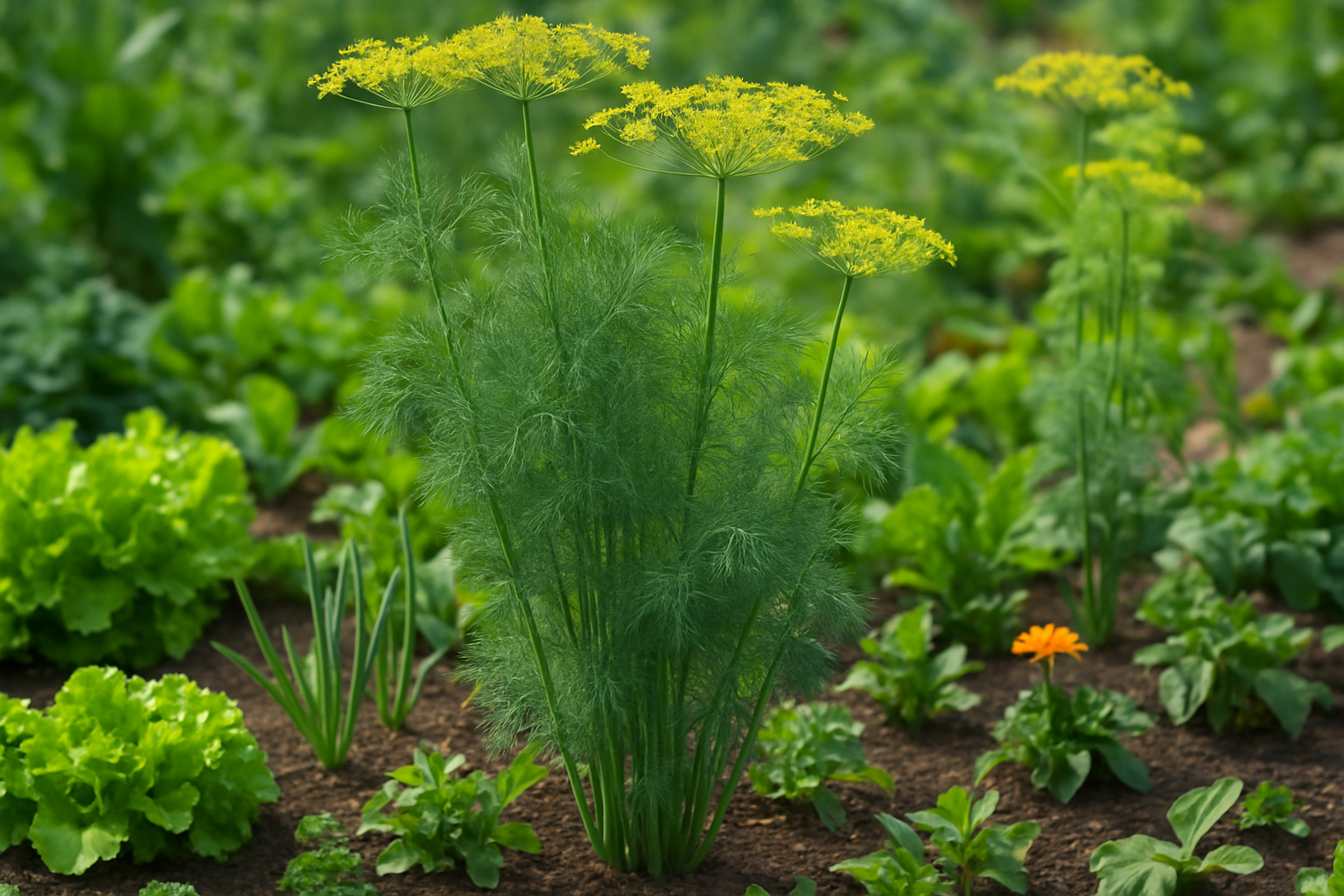Introduction
Dill is a favorite in both kitchens and herb gardens, celebrated for its feathery leaves and distinctive flavor that brightens everything from pickles to salads. Beyond its culinary uses, dill also boasts medicinal properties, making it an essential herb for many gardeners.
But as you bring your garden to life, it’s important to consider companion planting—the thoughtful practice of grouping plants together for mutual benefit. The right pairings can boost growth, ward off pests, and even enhance flavor, while bad neighbors can stunt development or invite trouble.
That’s why understanding which herbs not to grow near dill is crucial for anyone aiming to cultivate a healthy, productive garden. In this post, we’ll share which herbal companions to avoid when planting dill and the reasons behind these no-go pairings. Whether you’re working with a windowsill planter or managing a full backyard plot, knowing these companion planting dos and don’ts will help you sidestep common mistakes, keep your dill flourishing, and ensure a thriving herb garden.
What Makes Dill a Unique Neighbor?

Dill stands out in any garden because of its airy growth habit, feathery leaves, and tall, slender stalks that can reach up to three feet high. This hardy annual develops a deep taproot, which helps it access water far down in the soil, often making it a drought-tolerant companion.
Unlike more aggressive herbs, dill’s roots don’t crowd out neighbors, but its chemical interactions do matter—dill releases natural compounds into the soil and air that can affect nearby plants, a phenomenon called allelopathy. Simply put, allelopathy is when a plant releases substances that can help or hinder the growth of others. In dill’s case, it can stunt the development of veggies like carrots or tomatoes if planted too close.
However, dill’s benefits usually outweigh its quirks: its tiny yellow blooms are irresistible to pollinators like bees and beneficial insects, and its strong scent helps confuse garden pests such as aphids and spider mites. Many gardeners use dill as a living pest deterrent or let it flower to invite ladybugs and lacewings.
Still, it’s smart to keep dill at arm’s length from certain crops or rotate its planting every season. Overall, dill brings a unique combination of protective chemistry, pollinator-friendly blooms, and gentle root habits, making it a valuable—if occasionally complicated—neighbor in the herb garden.
Top Herbs You Should Avoid Planting Near Dill
When planning your herb garden, it’s important to know which plants play nicely—and which should be kept apart. Dill, beloved for its feathery leaves and tangy flavor, can actually be a tough neighbor for several other common herbs.
For instance, basil should be kept away from dill because they compete for the same nutrients and sunlight, often leaving one stunted or overshadowed. Dill’s rapid, bushy growth can crowd basil, causing weaker, less flavorful leaves.
Similarly, cilantro and coriander are poor companions for dill due to their matching needs for space and moisture. Both can become spindly as they compete for resources, preventing either from growing at its best.
Tarragon finds dill’s presence overbearing because both release chemicals from their roots that can hinder each other’s development, leading to smaller, less vigorous plants.
Sage and dill also make a bad match. Sage not only resists the higher moisture that dill prefers but may develop off-flavors when grown nearby. Meanwhile, sage’s strong oils can diminish dill’s delicate taste.
Fennel, a notorious garden loner, poses a special risk. It can cross-pollinate with dill, resulting in odd-tasting seeds and unpredictable growth in both plants. Plus, fennel’s allelopathic properties—that is, substances it releases into the soil—can stunt dill’s development.
Avoiding these combinations will help each herb thrive on its own terms. For example, keep dill on one side of your garden bed and group incompatible herbs like basil and coriander together elsewhere. This way, every plant will flourish with ample light, space, and unaltered flavor.
Think of companion planting as matchmaking for your herbs—a little separation goes a long way in keeping the peace and maximizing your harvest.
Troublesome Vegetable and Flower Companions
While dill is a popular herb for both vegetable gardens and flower beds, it isn’t always the friendliest neighbor. One of the biggest issues arises when dill is planted near carrots or fennel. Dill and carrots belong to the same family and can easily cross-pollinate, resulting in poor-tasting or oddly shaped carrots.
Both dill and fennel release chemicals—a phenomenon known as allelopathy—that can stunt the growth of each other and other sensitive plants nearby. Some flowers, especially those sensitive to strong-scented herbs like certain asters or chrysanthemums, may also experience hampered growth in the presence of dill. This can lead to lackluster blooms or smaller plants overall.
The root of many of these problems lies in competition for similar nutrients and space, as well as interference from natural plant compounds. To avoid trouble, it’s best to keep dill at least 18-24 inches away from carrots, fennel, and susceptible flowers.
Good neighbors for dill include onions, lettuces, and cabbage-family plants, as these don’t compete for the same resources and even benefit from dill’s pest-repelling properties. Always check your garden layout before planting to avoid surprises, and consider using pots or dedicated herb sections to give dill its own space if you’re tight on room. This careful planning helps ensure a thriving, harmonious garden—even for finicky plants like dill.
Plants That Pair Well With Dill
Dill is a superstar companion plant in the garden, offering benefits to a mix of herbs, vegetables, and even some flowers. Pair dill with cabbage family vegetables like broccoli, Brussels sprouts, and kale—its naturally strong scent deters cabbage loopers, aphids, and other common brassica pests.
Tomatoes also thrive near dill, especially when young, as dill attracts helpful pollinators and predatory insects, such as ladybugs and lacewings, that keep tomato hornworms in check. However, dill should be moved away from tomatoes before flowering, as mature dill can inhibit tomato growth.
Among herbs, dill does well with chives and cilantro; their combined aromatic presence boosts pollination and wards off unwanted insects. For vegetables, try planting dill close to lettuce, cucumbers, and onions—it can lure away pests like spider mites and aphids, plus its umbrella-shaped flowers draw bees and butterflies to boost yields for all nearby crops.
Flower companions include marigolds and nasturtiums. Marigolds help reinforce dill’s pest-deterring powers, while nasturtiums attract beneficial insects and can serve as a “trap crop” for aphids, keeping them off your main harvest.
It’s best to avoid pairing dill with carrots or fennel; these relatives can cross-pollinate and stunt each other’s growth, leading to poor flavor and inconsistent harvests. Likewise, avoid planting dill beside peppers or potatoes, as their competitive root systems can fight for nutrients.
With a thoughtful mix of partners, dill can be the secret weapon that makes your home garden healthier and more productive.
Tips for Successful Herb Garden Planning

Planning a successful herb garden starts with understanding which herbs thrive together and which should be kept apart. For example, dill shouldn’t be planted near basil, fennel, or cilantro due to their competing growth habits and flavors.
To avoid these issues, consider arranging your herbs in clearly defined sections—either in raised beds or containers—which give you complete control over their proximity. Raised beds are perfect for grouping compatible herbs together and keeping dill isolated on one end, while containers can be moved as needed to separate dill from any herbs that might stunt its growth.
If you’re short on space or want a visually interesting garden, interplanting can also work. Simply use physical barriers like small edging or group incompatible plants with buffer herbs such as chives or parsley, which generally get along well with most herbs.
Making a few mistakes when planning your garden is totally normal. If you find that herbs like dill and basil are planted too close and one starts to look stressed, don’t panic. Just gently dig up the struggling plant and relocate it to a better spot, making sure to water it well to reduce transplant shock.
Regularly assess your garden’s layout and be open to making adjustments. Even small changes can help rescue herbs competing for resources. With flexibility and a bit of observation, you can create a thriving, harmonious herb garden that yields fresh flavors all season long.
Frequently Asked Questions About Dill Companions
Wondering which herbs grow best with dill? A common question is whether dill can be planted alongside basil, parsley, or cilantro. Dill generally thrives next to basil and parsley, but avoid planting it near cilantro, as they compete for nutrients and can stunt each other’s growth.
Another frequent concern is whether dill will cross-pollinate with other herbs—thankfully, most culinary herbs are not close enough relatives for cross-pollination to be an issue, though dill can cross with fennel, so keep these apart.
For a healthy herb garden, space your plants to allow for good airflow, and rotate their locations each season to minimize pests and diseases. Mulching and regular watering help keep soil conditions consistent, and pinching off flower buds encourages more leafy growth.
The key takeaway: thoughtful pairing and simple care steps go a long way in helping dill and its herb companions thrive. Don’t be afraid to experiment and see what works best in your garden’s unique environment.
